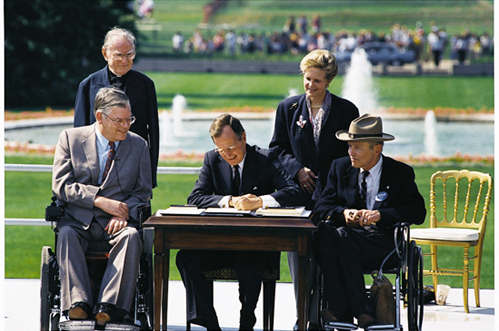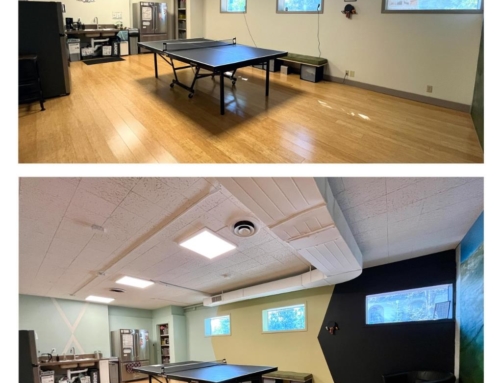This past July was the 30th anniversary of a landmark law, a law that has positively impacted the built environment and the daily lives of countless people from coast to coast… can you think of what it is?
If you thought about the Americans with Disabilities Act, then you were correct!
From the International Code Council:
“Today’s buildings and community venues are far more accommodating of occupants needs and accessible to a greater segment of the population — The ADA is a wide-ranging, revolutionary piece of civil rights legislation that covers access, provides protection and expands opportunities for individuals with disabilities by reducing barriers in places of employment, state and local government services, public accommodations, transportation, commercial facilities, telecommunications and the built environment. The law ensures equal access to buildings and facilities and that people with disabilities have the same rights and opportunities as everyone else. Curbs, doors, stairs, signage and employment laws have been revised across the country in response to the measure.”
The Americans with Disabilities Act (ADA) was signed into law by President George H. W. Bush, on July 26, 1990. The bill had been in development for four years prior (primarily by the National Council on Disability – an independent federal agency), and the International Code Council (ICC). The ICC had been regularly incorporating accessibility provisions into the code since the mid-1970’s, with the first accessibility standard being published in 1961. Even more importantly, the passage of the ADA was the culmination of years upon years of struggle and activism by people with disabilities to establish and protect basic rights that so many were denied.
It can be hard to imagine that the guidelines that we so readily follow industry-wide today are relatively new to the world of architecture and to our built environment. Or, that so many struggled for so long before these specifications were developed and implemented. While we happily complete accessibility reviews and design based on current ADA requirements, we appreciate the need to increase the application of ADA standards in existing built spaces, as well as the need for ADA requirements to better address the full range of physical abilities to continue our country’s progress toward being truly equitable and accessible for all.








